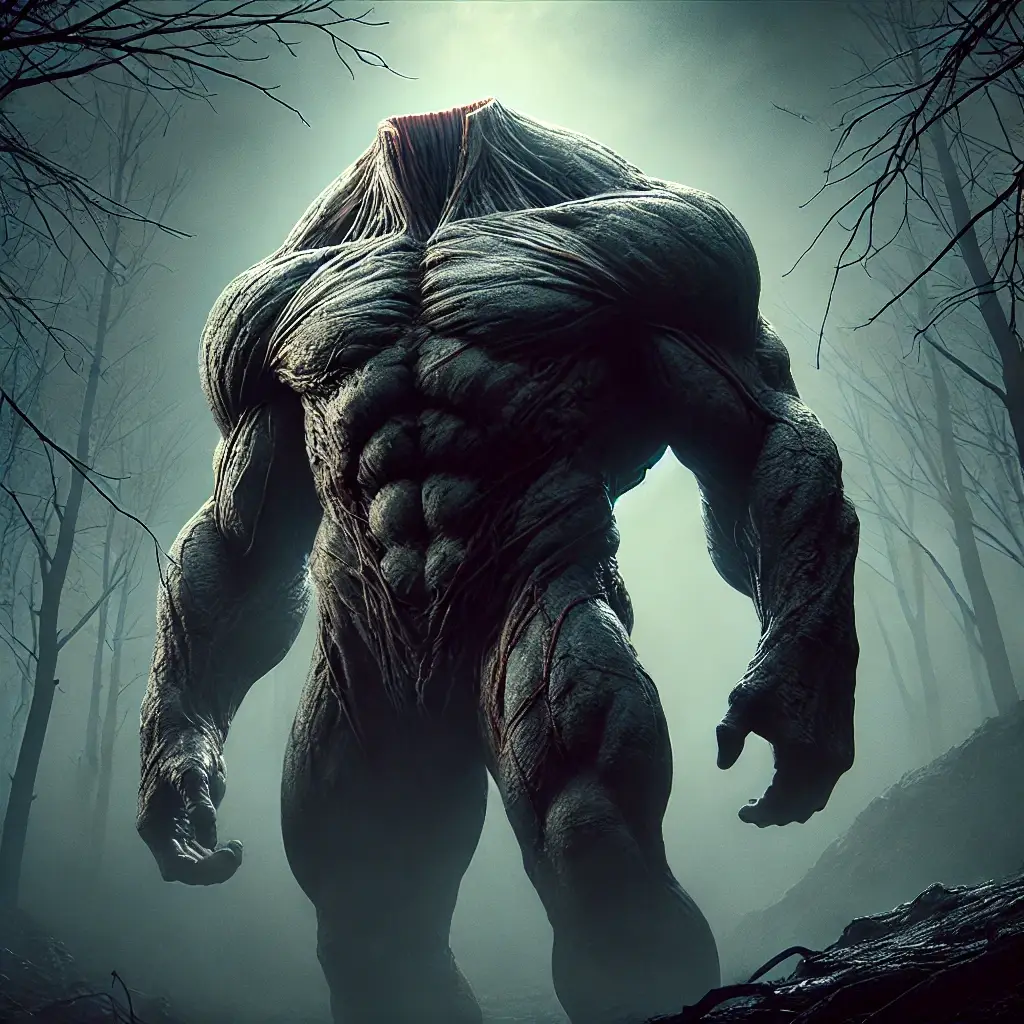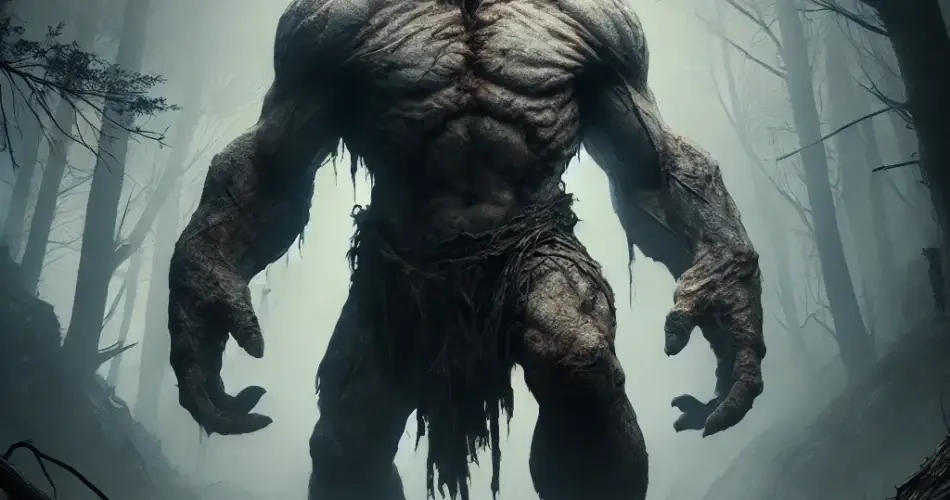On a quiet June night in 1964, a strange encounter in Grafton, West Virginia, gave birth to a legend that continues to fascinate locals and paranormal enthusiasts alike.
Two years after the infamous Mothman was first spotted in Point Pleasant, another mysterious figure emerged—the Grafton Monster. This eerie presence fueled West Virginia’s growing reputation as a cryptid hotspot, cementing its place in the state’s folklore.
Over the years, the Grafton Monster has joined the ranks of other paranormal legends, captivating the imaginations of generations.
What is the Grafton Monster?
The Grafton Monster is a cryptid. An animal whose existence or survival is disputed because it challenges conventional understandings of the natural world. Eyewitnesses describe it as a massive, headless humanoid.
The creature is typically characterized by a towering height of 7 to 9 feet and an impressive weight of 600 to 900 pounds. It has a muscular, hulking body that exudes raw power and Smooth, white skin reminiscent of a seal’s sleek coat.
The Grafton Monster’s seemingly headless appearance is especially chilling for those who say they’ve encountered it. Like the backward feet of the Curupira, this eerie feature heightens the creature’s strange and unsettling aura.
Over time, descriptions of the Grafton Monster have varied, which may paradoxically strengthen the legend’s grip on the popular imagination. The changing narratives contribute to its mystique and ongoing interest among enthusiasts.
When Was The Grafton Monster First Seen?

According to the West Virginia Encyclopedia, the Grafton Monster was a lesser-speculated creature in West Virginia for many years until it was first seen by journalist Robert Cockrell (1946-2022) late on June 16, 1964, near Route 119 by the Tygart Valley River in Grafton. Two days later, Cockrell shared his encounter in the Grafton Sentinel newspaper.
Following Cockrell’s report, a wave of sightings swept through the area. Over 20 people came forward with their own tales of the creature. The legend sparked a frenzy of “monster hunting” among local teenagers, each hoping to catch a glimpse of the enigmatic being.
As with many cryptids, speculation about the Grafton Monster’s origins ran wild. Some suggested it might be an escaped polar bear, while others pondered more exotic explanations, including the possibility of an extraterrestrial visitor.
Why Does the Grafton Monster Legend Persist?
The Grafton Monster legend’s persistence may be partly due to pareidolia—the tendency to perceive familiar patterns in random stimuli. This psychological phenomenon can lead people to interpret ambiguous shapes or sounds as evidence of the creature, contributing to reported sightings and belief in its existence despite the lack of concrete proof.
While some argue that cryptid legends like the Grafton Monster foster respect for wild areas and aid conservation efforts, the search results did not find specific evidence or studies supporting this claim.
Beyond its place in local lore, the Grafton Monster has unexpectedly boosted the local economy. Visitors from near and far come to Grafton, hoping to catch a glimpse of the elusive creature or simply to soak in the eerie, mysterious atmosphere. For instance, in the 2013 Environmental Impact Statement Appendix, the total overnight visitor spend in the region was reported at $260 million, indicating a robust tourism economy that the Grafton Monster could contribute to indirectly.
The legend of the Grafton Monster thrives, perhaps because of the ongoing tension between belief and doubt, which taps into our deep-rooted curiosity about the unknown. Even Robert Cockrell, the first person to report seeing it, later questioned his own experience. This tug-of-war between belief and scepticism keeps the legend alive, sparking endless discussions and debates that ensure the story remains a vibrant part of the public imagination.
How did the media react to the initial Grafton Monster sighting
The Grafton Monster gained renewed attention in 2018 when it was featured in the video game Fallout 76, set in a fictionalized version of West Virginia, which now has a TV series adaptation called Fallout. The monster has also appeared in seasons one and six of the show Mountain Monsters. Additionally, it has its own statue at the West Virginia cryptid-themed mini-golf course, Cryptid Mountain Miniature Golf. This caused an increase in interest and tourism to Grafton, with fans visiting the sites mentioned in the game and TV series.
It has been speculated that the Grafton Monster inspired the White IPA can beer manufactured by Greenbrier Valley Brewing Company in Maxwelton, West Virginia. According to Untappd, this beer features notes of “coriander, clove, and banana on the nose,” with flavours of “pepper, pineapple, and clove.”
Modern sightings of the Grafton Monster
There do not appear to have been any confirmed modern sightings of the Grafton Monster since Robert Cockrell’s initial sighting in 1964.
So, while the Grafton Monster remains a famous West Virginia cryptid, there is no evidence of any confirmed modern encounters with the creature since 1964. The planned 2024 festival aims to celebrate the monster’s history and legacy rather than report on new sightings
Conclusion: The Reflection of the 1960s Cryptid Craze
In summary, the 1964 sighting of the Grafton Monster occurred during a peak period of interest in cryptids and unexplained phenomena in the United States. Known as the “Monster Boom,” this era witnessed a surge in reports of mysterious creatures like Bigfoot and the Mothman, as mentioned earlier on in this piece.
The timing and description of the Grafton Monster fit well within this broader cultural context, capturing the public’s imagination and contributing to its swift spread and lasting intrigue. This connection highlights how the Grafton Monster, like other cryptid sightings of the time, reflects the era’s fascination with the unknown and its impact on American folklore, ensuring that the legend of the Grafton Monster continues to resonate.
